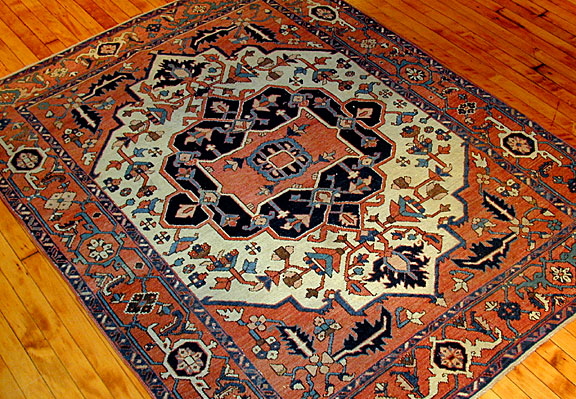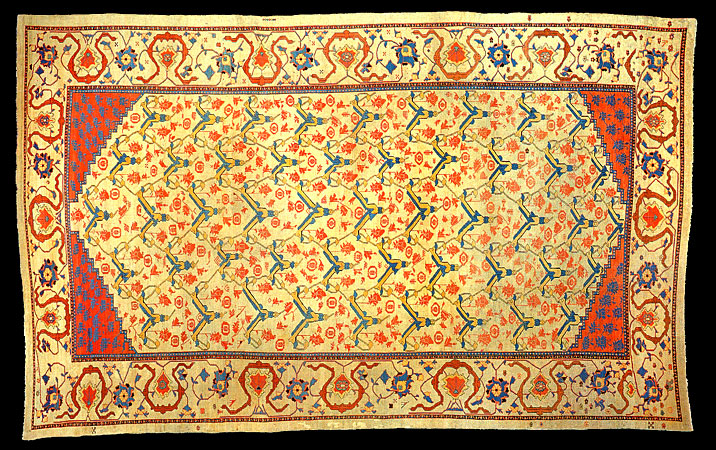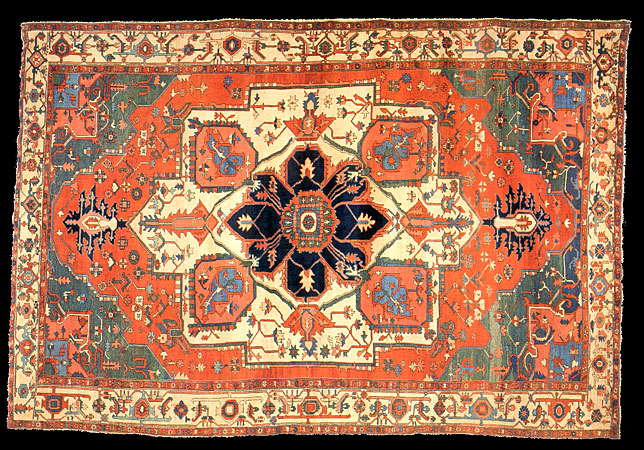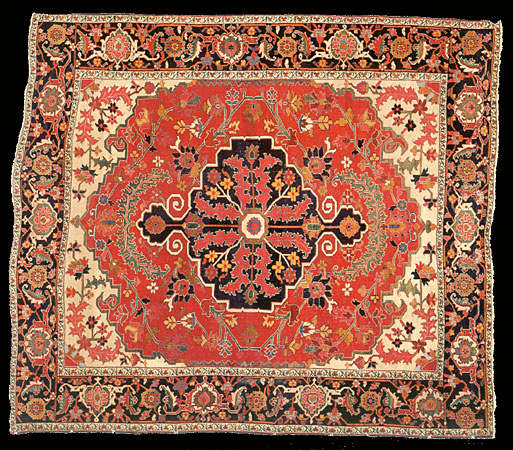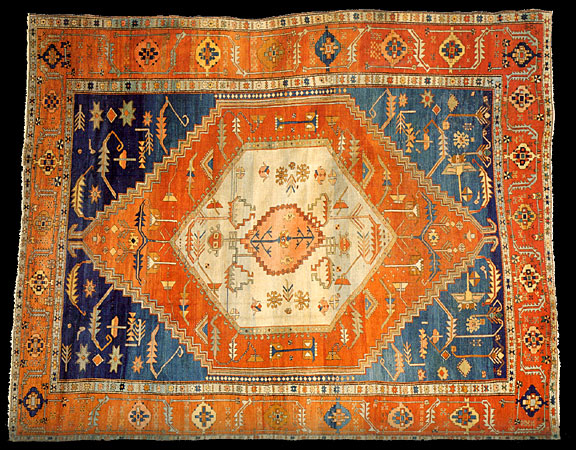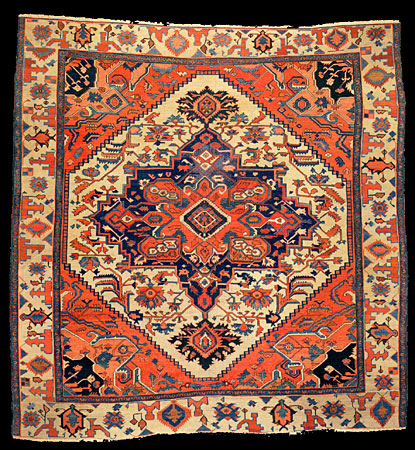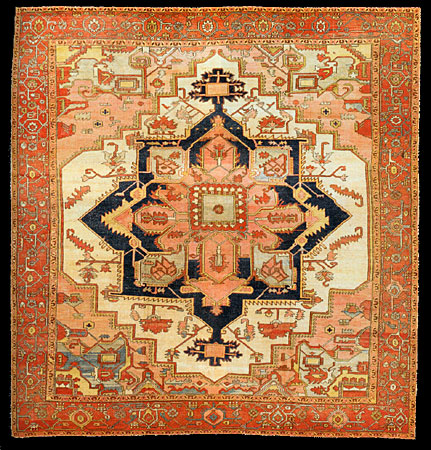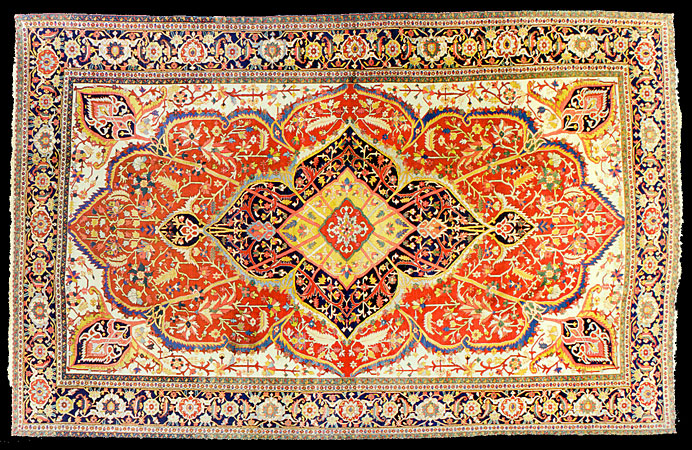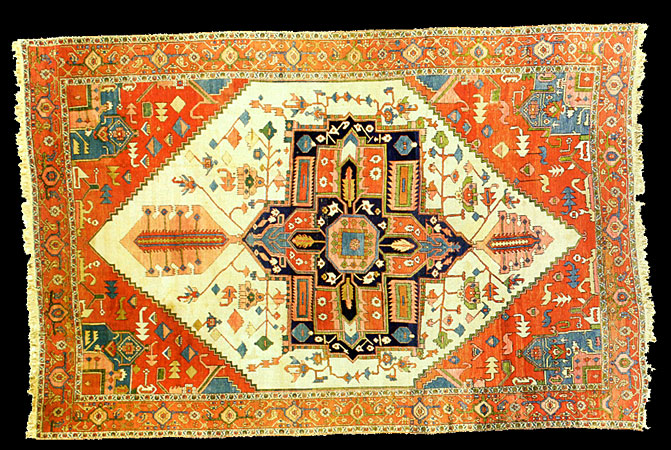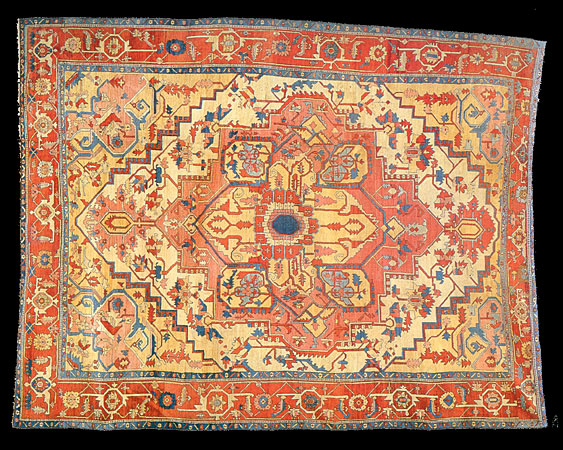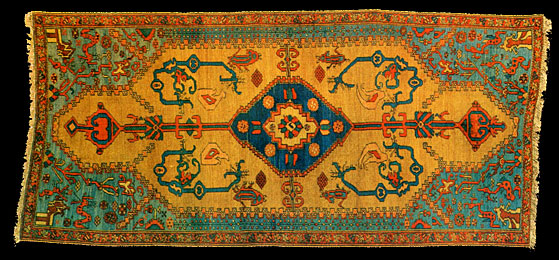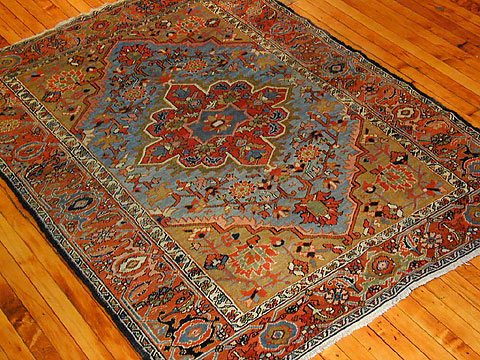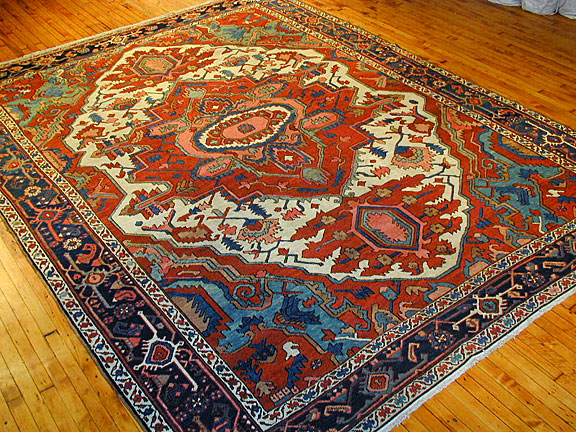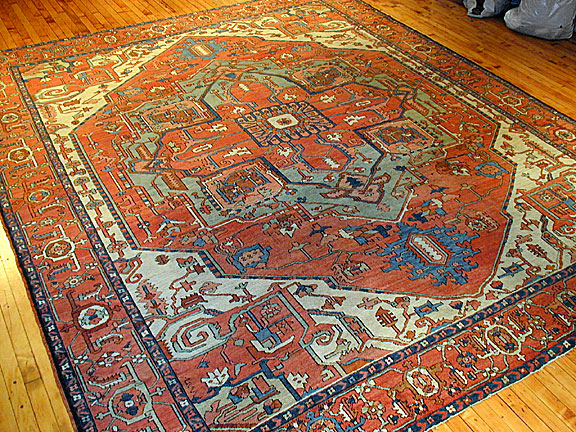Oriental Rugs Dictionary
Heriz (Herez, Serapi)
Heriz is the name of a village in the Turkish speaking Azerbaijan, situated in the northwestern part of Iran (Persia). Though the term covers rugs of numerous small villages in the area, the most beautiful samples were woven in Heriz itself.
For the last 100 years, the Heriz carpet designs have basically remained the same, with only small variations in color pallets and density of the design. The late 19th Century samples (so called Serapis) were of fewer details and softer colors and with time designs became denser with added jewel tone color pallets. Therefor it is relatively easy to identify Heriz carpets and determine their age.
The revival of the carpet industry in the late 19th Century was based on the demand of the Western markets, with America in particular. Weavers in Heriz were asked to make carpets inspired by the Fereghan Sarouks of higher cost for consumers of more limited budgets. Even though Sarouk carpets changed style later on, Heriz weavers stayed with the geometric pattern till now. However, Heriz was also a center of production of some of the best samples of fine silk carpets with both geometric and curvilinear floral patterns.
